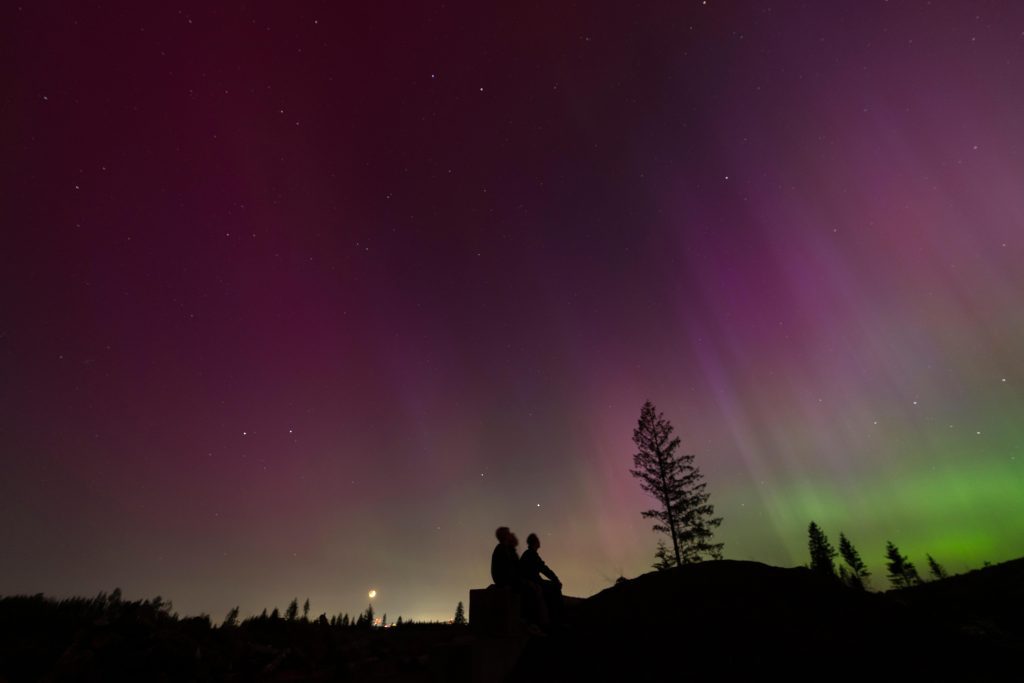A intense solar storm created a spectacular light show across the world overnight, but only caused minor disruptions to the power grid, communication, and satellite systems.
The U.S. National Oceanic and Atmospheric Administration stated that extreme geomagnetic storm conditions persisted on Saturday, with initial reports of irregularities in the power grid, degradation of communications, and global positioning systems.
The Federal Emergency Management Agency reported that as of early Saturday morning, no significant impact from the storms had been reported in any FEMA region.
NOAA forecasted continued strong flares until at least Sunday, and a spokesperson mentioned that the agency's Space Weather Prediction Center had thoroughly prepared for the storm.
On Saturday morning, SpaceX’s Starlink satellite internet service indicated on its website that service had been affected, and its team was investigating. CEO Elon Musk stated that the satellites were “under a lot of pressure, but holding up so far.
Vibrant purple, green, yellow, and pink colors of the Northern Lights were seen worldwide, including in Germany, Switzerland, London, Prague, Barcelona, and other locations.
In the U.S., the solar storm on Friday night caused the lights to be visible much further south than usual. People in Kansas, Nebraska, Iowa, Michigan, Minnesota, and other Midwestern states were able to capture photos of the colors along the horizon.
NOAA stated that the solar storm would continue throughout the weekend, providing another opportunity for many to see the Northern Lights on Saturday night.
The agency issued a rare severe geomagnetic storm warning when a solar outburst reached Earth on Friday afternoon, hours earlier than expected.
NOAA alerted operators of power plants and spacecraft in orbit, as well as FEMA, to take precautions.
Rob Steenburgh, a scientist with NOAA’s Space Weather Prediction Center, mentioned that most people on Earth would not need to take any action.
“That’s really the gift from space weather: the aurora,” said Steenburgh. He and his colleagues suggested that the best aurora views might be captured using phone cameras, which are better at capturing light than the naked eye.
Taking a picture of the sky could result in a pleasant surprise,
The most intense solar storm in recorded history, which occurred in 1859, caused auroras in Central America and possibly even Hawaii.
This storm poses a risk for high-voltage transmission lines for power grids, not the electrical lines typically found in people’s homes, according to NOAA space weather forecaster Shawn Dahl. Satellites could also be affected, potentially disrupting navigation and communication services on Earth.
An extreme geomagnetic storm in 2003 knocked out power in Sweden and damaged power transformers in South Africa.
Even after the storm, signals between GPS satellites and ground receivers could be scrambled or lost, according to NOAA. However, there are enough navigation satellites that any outages should be short-lived, noted Steenburgh.
The sun has emitted strong solar flares since Wednesday, leading to at least seven bursts of plasma. Each explosion, known as a coronal mass ejection, can contain billions of tons of plasma and magnetic field from the sun’s outer atmosphere, or corona.
The flares appear to be linked to a sunspot that’s 16 times the diameter of Earth, according to NOAA. It is all part of the solar activity increasing as the sun approaches the peak of its 11-year cycle.
Dunn reported from Cape Canaveral, Florida, while Krisher reported from Detroit and Funk from Omaha, Nebraska.
Get more Colorado news by signing up for our daily Your Morning Dozen email newsletter.



